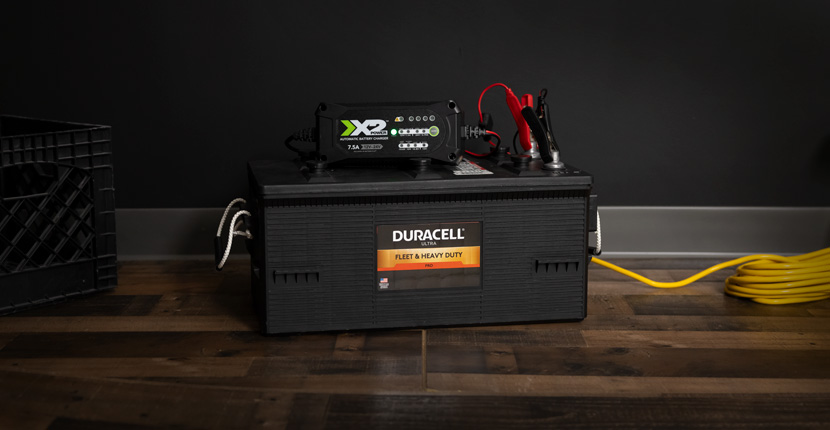Winter Battery Storage and Maintenance
- by Nikki Felton - updated on 11/20/2023

With temperatures dropping below freezing in many parts of the country, it's time to start thinking about winterizing some of your equipment's batteries if you haven't already. If you have an application you use in the winter, but intermittently, then you'll need to properly maintain it for the next use.
But how do I know if my battery needs to be winterized? And how do I do it? Or how do I maintain my battery over the winter for its next use?
We will cover what happens if you don't winterize your battery and the process of storage/winterization of the most common battery type.
What Happens if You Don't Prepare Your Batteries for Winter?
Some common pitfalls leading to battery failure in the winter, especially in cold climates, includes the following:
- Freezing of the electrolyte solution in lead acid batteries
As the solution freezes, it expands and pushes together the lead plates, leading to a short between the positive and negative plates. Not only is the structure of the battery compromised, but functionality-wise, it will not be able to produce the proper electrical current. Ultimately, you will need a new battery. - Check for corrosion in the fall
Corrosion causes reduced battery life and electrical problems. When corrosion is present, there is an increased resistance within the circuit, disrupting the electrical current. This causes a less efficient flow of energy between terminals and decreases the battery's power, causing difficulties when starting the battery. Inefficient recharging of a battery with corrosion can result in complete failure... Too much corrosion, and you'll have to replace the battery entirely in the future. - Decrease cycle time and more frequent recharging
As the temperatures decrease, the battery's capacity decreases. Because of the cold temperatures, chemical reactions occur more slowly, producing less current than what is being demanded. This leads to faster discharge and more frequent recharging.
Intermittent Battery Use Storage
With batteries for vehicles that are only used as needed and can sit for extended periods like municipal maintenance, snow plows, or lawn and garden equipment, it is important to maintain the charge of the battery in between seasons. Visit our other blog Is Your Vehicle Fleet Ready For Winter? for more information. As mentioned previously, the battery's capacity decreases as temperatures fall, requiring more frequent charging. So it's imperative that you keep your battery fully charged with a battery maintainer in between uses and stored in a dry and cool environment. If you're wondering where to store your battery, visit our blog Can I Store Batteries in the Garage? for do's and don'ts of winter storage.
Long-Term Battery Storage/Winterization
For applications like seasonal cars and golf carts, you'll want to make sure that you properly prepare your battery for storage. Here is an example of how to winterize a deep-cycle battery:
- Turn off and disconnect the battery from the application
- Examine the electrolyte level
Do not fill all the way to the top. Rather make sure the electrolyte level is above the plates and just below the plastic covering. - Clean any corrosion
Turn off the battery, disconnect the battery cables, and remove corrosion from terminals with a wire brush. Then coat with a corrosion guard where necessary. Copper and steel on the battery should all be coated to prevent further corrosion. - Ensure tight connections
If the battery is left installed and connected, the terminal connections should be tight, but not gorilla tight. - Check Voltage
Make sure the battery is at a full state of charge. - Maintain the Charge
Use a quality charger that can adjust to the needs of the system - Monitor
Check on the battery and charger frequently to ensure everything is working correctly and that the charger has not failed. A little preventive maintenance can go a long way.
For application-specific battery winterization, check out our other blog Battery Storage and Winterization Guide.
Avoid having to buy a new battery in the spring by properly storing and winterizing your current battery this season. If your battery is showing signs of failing, or you need to replace the battery, bring it into your local Batteries Plus store and an associate will help you find the best replacement.